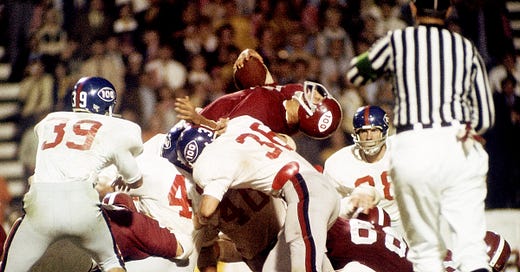“There’s a spirit, there’s an energy, there’s a passion in college football that you can’t replicate anywhere else. It’s about pride, tradition, and a love for the game.”
- Pat Dye
I spent the weekend visiting friends in western North Carolina, reminiscing and taking stock of the damage caused by Hurricane Helene. I had forgotten it was Super Bowl weeken…





